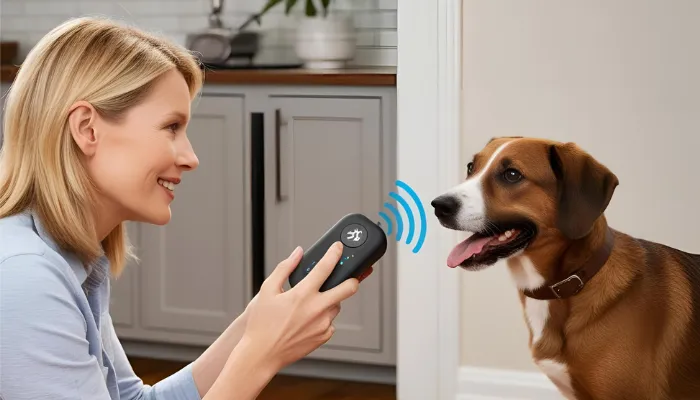What’s Hello in Dog Language? If you have ever spent time with a dog or owned a dog, the dog would probably bark at you. But what if you had a dog translator? Even though dogs don’t talk the same language that we do, they possess gestures of saying “Hi”, crying, and greeting.
Knowing how different dogs say “hello” will help you relate better with your pet and also make communication more effective. This article will look at how different dogs say “hello” to other dogs and also to people.

How Do Dogs Say Hello to Each Other?
What’s Hello in Dog Language? Dogs communicate through body language, vocalization, and scent, which play a crucial role in their interactions. When greeting each other, they rely on specific behaviors to express curiosity, friendliness, or caution. Here are some common ways dogs say hello:
- Smelling – Dogs may often sniff each other’s faces and posterior to gather info.
- Wagging Tail– This may indicate friendliness and eagerness for interaction but the position of the tail matters.
- Play Bows – It is a sign for an invitation in dog language when one dog lowers its front legs while keeping its rear up.
- Ear and Eye Signals – Relaxed ears with soft eye contact show friendly approach.
Here’s a quick reference table for common dog greeting behaviors:
| Greeting Behavior | Meaning |
|---|---|
| Sniffing | Gathering information, checking scent cues |
| Tail Wagging | Excitement, friendliness (depends on speed and height) |
| Play Bow | Invitation to play, friendly intent |
| Licking Face | Respect, submission, affection |
| Soft Eye Contact | Trust, friendliness |
Understanding What’s Hello in Dog Language? can help pet owners better interpret their dog’s social interactions and responses.
How Do Dogs Greet Humans?
When dogs interact with people, they might show greeting manners in actions, but with slight differences:
- Jumping Up – Dogs exclaim hello through jumps, usually directed to, their loved ones, which although might be in excessive volume is not always appreciated.
- Licking Hands or Face – Dogs may lick as a sign of engagement.
- Tail Wagging – A happy dog usually wags its tail at medium height and rotates it in circles.
- Bringing a Toy – Some dogs greet their owners with a beloved toy, and in so doing, try to reciprocate admiration.
- Leaning or Rubbing Against You – Dogs may rub their bodies against their owners for affection and trust.
Understanding these signs can improve the interaction between you and your pet.
How to Say Hello to a Dog Properly?
What’s Hello in Dog Language? When meeting a dog, it’s pivotal to respect his means of communication to ensure a safe and pleasant interaction. In most cases, dogs utilize body movements and scent as means of assessing new people and their surroundings. Hence, they ought to be approached in a certain way. Here is how dogs should be approached and greeted:
- Let the Dog Approach First – When trying to greet a dog, allow it to move or run towards you first. Rushing towards a dog can frighten it, hence it is better if the animal approaches you on its own.
- Use a Calm Voice – In order to allow the animal to feel comfortable, it is important to use gentle and calm tones. Make sure not to speak too loud as you may scare the animal, especially small dogs.
- Offer Your Hand for a Sniff – You should place your palm facing downwards and at a distance, so the pet can sniff your palm. Letting the dogs sniff people they don’t know is a good way for them to familiarize themselves with the individual.
- Avoid Direct Eye Contact – Keeping direct eye contact with a dog might evoke aggression or anger, so only use indirect gazes towards the animal. Some degree of eye contact is ok, just avoid staring directly into the dogs eyes.
- Pet Gently – Start petting the dog on its chest or side rather than its back or head as that may overly intimidate the animal. Take it slow, as the dog will show signs of comfort.
Implementing these steps serves to build confidence and ensure a calm, welcoming introduction for both you and the dog.
Conclusion
What’s Hello in Dog Language? Dogs communicate with people and other dogs through sounds and movement, so greeting comes in many forms. Whether it’s a sniff, tail wagging, or a bow, each gesture is unique and indicates intention as well as emotion.
Learn to pick up such signs and respond to them. You will build a better relation with your pet. The next time you come across a dog, try saying hello in their own language and watch what their reaction is!
